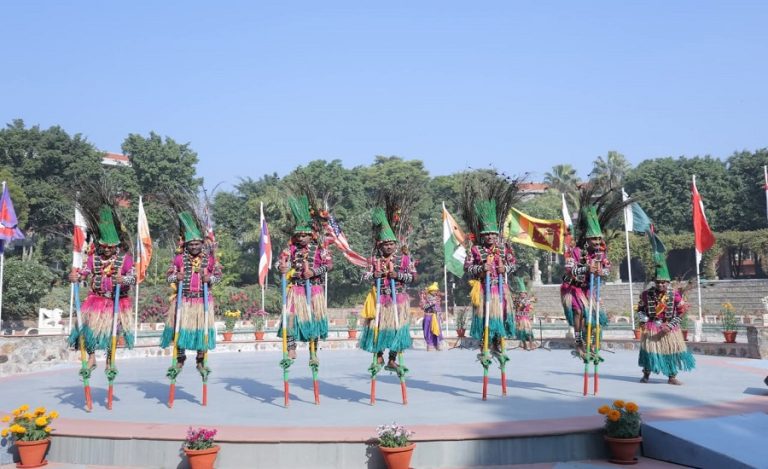In the serene hills of Munnar, where mist rolls over lush landscapes and wildlife roams freely, a quiet revolution is taking root—literally. Once-abandoned croplands in the tribal settlements of this picturesque region are being transformed into thriving turmeric farms, offering not only economic prospects but also a renewed sense of hope for the tribal communities.
For decades, stretches of fertile land in and around the Chinnar Wildlife Sanctuary, Eravikulam National Park, and Anamudi National Park lay fallow, abandoned by the tribal population due to increasing threats from wild animals, particularly elephants and wild boars. However, a new initiative under the guidance of the Munnar Wildlife Division and with financial backing from the Forest Department is changing that narrative.
A SUCCESSFUL TRIAL PAVES THE WAY
According to Munnar Wildlife Warden K.V. Harikrishnan, the project began as a small-scale experiment last year. “Two acres of turmeric farming were conducted under the Munnar forest division, and it reaped rich dividends,” he says. Encouraged by this success, this year’s programme has been scaled up significantly. “Turmeric farming will now be conducted on 55.56 acres across tribal settlements. The land, previously abandoned due to wild animal attacks, has proven suitable for this crop. The trial farming confirmed that turmeric cultivation is both practical and profitable in these areas.”
TURMERIC: A NATURAL DETERRENT TO WILDLIFE
Turmeric, with its strong aroma, not only adds flavour and medicinal value but also acts as a natural deterrent to wild animals. Observations from last year’s trial indicated that elephants, wild boars, and other forest dwellers tend to avoid turmeric plantations, providing a safer alternative for tribal farmers. “During the trial farming, both the department and the tribal farmers monitored wild animal activity in the turmeric fields. It became clear that the crop-raiding threat had significantly reduced,” the officer explains.
FINANCIAL SUPPORT AND MARKET ASSURANCE
The initiative has received robust support from the Anamudi Forest Development Agency, which is providing financial assistance to participating farmers. Two types of turmeric varieties are being cultivated: the high-yield “Pragathi” variety and a traditional local variety. Once harvested, the produce will be sold through ‘Chilla,’ the Forest Department’s weekly tribal market at Marayur, as well as department-owned eco-shops. This ensures a guaranteed market for the farmers, making the venture economically sustainable.
WIDESPREAD IMPACT ACROSS TRIBAL SETTLEMENTS
The scale of the project is impressive. Tribal settlements across Eechamppetty, Iruttalakudy, Thayannankudy, Alampetty, Puthukkudy, Vellakkalkudy, Mulangamutty, Kulachivayal, Swamiyaralakudy, Valsapettykudy, Koodallarkudy, and Lakkam Kudy are all participating. For the local communities, the initiative is more than just a farming experiment—it is a lifeline. The average yield of turmeric from these farms is about five tonnes per acre, highlighting the crop’s potential as a reliable source of income.
REVIVING TRADITIONAL PRACTICES
The project is also part of a larger vision to revive traditional agricultural practices among tribal communities. In 2017, the Forest Department launched the ‘Punarjeevanam’ project, spearheaded by former Chinnar Wildlife Sanctuary assistant wildlife warden P.M. Prabhu. That initiative focused on reviving traditional millet cultivation and achieved remarkable success, providing a blueprint for the current turmeric farming program.
A MODEL FOR SUSTAINABLE DEVELOPMENT
Experts and officials see this initiative as a model for sustainable agricultural development in ecologically sensitive areas. By integrating traditional knowledge with scientific practices and government support, the project balances economic growth with environmental preservation. Tribal communities gain a steady income while reducing human-wildlife conflict, ensuring that both nature and people thrive together.
For the tribal farmers of Munnar, the aroma of turmeric in the air is more than just a sensory delight—it symbolises resilience, renewal, and the promise of a better future. As these green carpets of turmeric stretch across the once-forlorn hillsides, they tell a story of hope, determination, and the transformative power of innovative farming practices.
The success of the initiative also highlights the importance of inclusive development, where local communities are actively engaged in decisions about land use and agricultural planning. By reclaiming abandoned croplands, the tribal farmers are not only revitalising the soil but also rediscovering their place in a rapidly changing world.
As the harvest season approaches, eyes across Munnar will be on these turmeric fields, where nature and human enterprise coexist harmoniously. For the tribal communities, every sprouting turmeric shoot is a testament to their enduring spirit and a step toward a prosperous, self-reliant future.































